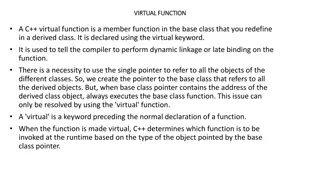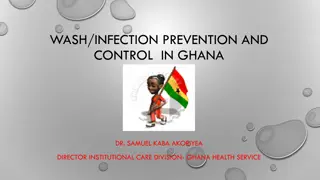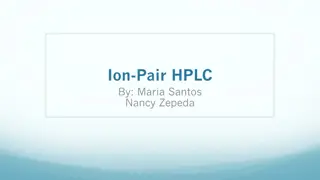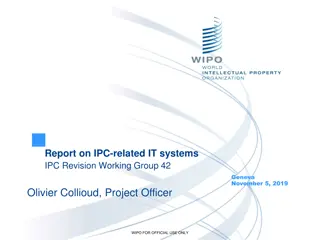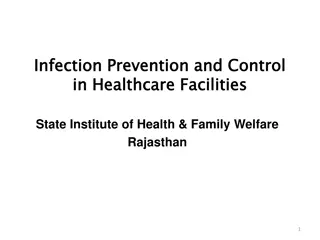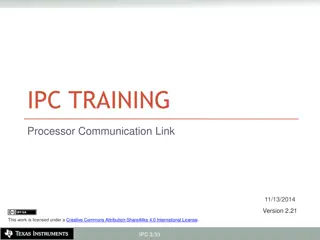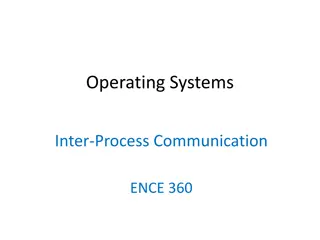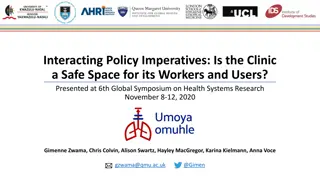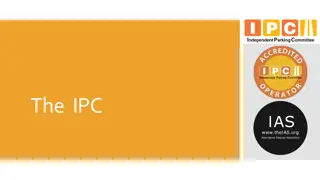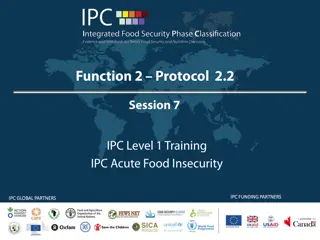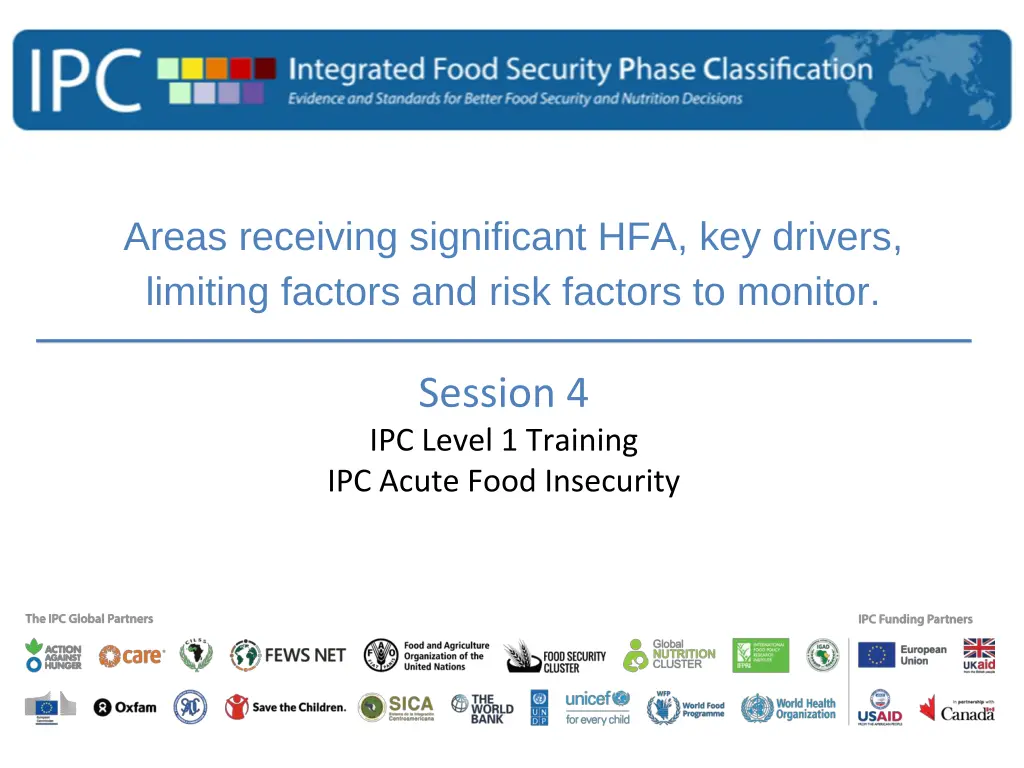
Monitoring Humanitarian Food Assistance Drivers and Factors
Explore the areas receiving significant humanitarian food assistance and learn about key drivers, limiting factors, and risk factors to monitor. Understand the identification process and analysis of key drivers and most affected populations in the context of food security. Delve into the current classifications to identify areas that have received substantial humanitarian food aid.
Download Presentation

Please find below an Image/Link to download the presentation.
The content on the website is provided AS IS for your information and personal use only. It may not be sold, licensed, or shared on other websites without obtaining consent from the author. If you encounter any issues during the download, it is possible that the publisher has removed the file from their server.
You are allowed to download the files provided on this website for personal or commercial use, subject to the condition that they are used lawfully. All files are the property of their respective owners.
The content on the website is provided AS IS for your information and personal use only. It may not be sold, licensed, or shared on other websites without obtaining consent from the author.
E N D
Presentation Transcript
Areas receiving significant HFA, key drivers, limiting factors and risk factors to monitor. Session 4 IPC Level 1 Training IPC Acute Food Insecurity
k) Identification of areas that received or will receive significant humanitarian food assistance Identification of areas should be done after the classification and should conclude whether the area received or is likely to receive significant humanitarian food assistance Key points: IPC protocols are not designed, nor should they be used, to formally assess the impact of any humanitarian assistance on food insecurity or to monitor achievements towards goals. By humanitarian food assistance IPC refers to direct resource transfers that have the objective to reduce food gaps and protect and save lives and livelihoods. Only transfers that have an immediate positive effect on household s access to food are to be considered. May include different modalities - e.g. distributions of food, cash or vouchers, and livelihood assets
l) Identification of key drivers and most affected populations IPC provides tools for basic analysis of key drivers and limiting factors as per the IPC Food Security Analytical Framework. The analysis is not, however, detailed and more analysis should be conducted for targeting purposes. Key points: Key drivers are typically the main factors affecting food security and can be found in the hazards and vulnerability section of the IPC Food Security Analytical Framework. Examples include weather related shocks, conflict or price shocks Limiting factors of food insecurity are analysed by identifying which combination of factors related to the availability, access, utilization and stability prevent people from being food secure By identifying key shocks and vulnerabilities affecting current conditions, analysts are also able to indicate likely key drivers of acute food insecurity and, to the extent possible, some characteristics of the most affected populations
Current Classifications Step 5: Identify areas that received significant humanitarian food assistance Relevance: Identify areas that received a large amount of humanitarian food assistance in the period preceding the current analysis Approach Overview: Parameters included in Protocol 2.3-k to be followed Analysis to consider for example the size, duration, type, coverage of assistance and any issues that may prevent assistance from reaching or being utilised by beneficiaries, such as limited access or aid diversion Two-part process is suggested in IPC v3.0: analysts identify first whether assistance meets the criteria for flagging the area, and then review whether assistance has reached the intended beneficiaries. This process determines whether the mapping symbol for highlighting the presence of significant assistance is used Analysis has no impact on Phase classification or on population estimates 4
Current Classifications Step 5: Identify areas that received significant humanitarian food assistance (cont.) Two-part process PART 1: - At least 25 percent of the households met between 25 and 50 percent of their caloric needs through humanitarian food assistance; - At least 25 percent of the households met more than 50 percent of their caloric needs through humanitarian food assistance; Flag Areas that received significant Humanitarian Food Assistance as per two identified categories - Assess if any factors have prevented receipt and utilization of received assistance, such as: - Targeting - Sharing - Aid diversion - Thefts/corruption PART 2: Assess if any factors prevented delivery of HFA to intended beneficiaries To be completed by the Core TWG before and reviewed by the Analysis Team during workshop 5
For Current Classification Step 5 in ISS: Describe HFA received in the area Free text: Should follow general guidance from Manual Conclusion Decide if area received significant humanitarian food assistance
Current Classifications Step 6: Identify key drivers Relevance: To enable decision-makers to identify main triggers of the current food insecurity situation so that action can be more strategically planned. Approach Overview: No authoritative guidance, only a brief set of considerations Basic understandings of what Shocks & Vulnerability factors are the major issues driving acute food insecurity Actual/Current = f Hazard Acute Food Insecurity & Vulnerability In relation to specific hazards: Exposure: Experience of hazards Susceptibility: Ways the system is affected by hazards Resilience: Ability to withstand a hazard and return to previous conditions Damaging phenomenon that can be: Natural or human-induced Acute/sharp or chronic/on- going Seen in terms of: Probability Severity Magnitude Actual negative results/impacts of losses Analyzed in terms of: Livelihood Strategies: Food & income sources, usual coping & expenditures Livelihood Assets: 5 capitals Policies, Institutions, and Processes 7 To be completed by the Analysis Team during workshop
For Current Classification Step 6 in ISS: Identify key drivers Drop-down menu or other (specify) Brief Description Free text for statement on why the driver was selected
Current Classifications Step 7: Identify key limiting factors Relevance: To enable decision-makers to identify limiting dimensions of food security so that response can target appropriate areas of interventions (availability, access, utilization and stability) Approach Overview: Using evidence and analysis done in Step 3: Assess to what extent each dimension limits food security: Extreme limiting factor Major limiting factor Minor limiting factor Not a limiting factor Write brief statements as relevant and feasible Providing key reasons as to why this element limits [or not] food security Need to provide a written conclusion 9 To be completed by the Analysis Team during workshop
For Current Classification Step 7 in ISS: Step 3: Conclusion of food availability, access and utilization Can be done within Step 3 or Step 7 If Step 3 has been completed this step will be automatically updated The two are linked and changes made in one will be copied to other The food availability is major limiting factor because 53% of the households have their cereal harvests lasted only for 1-2 month, therefore they have already run short of stock. Some proportion of population had already harvested cereals earlier before the real time of harvest to close the food gaps.Although the County cereal production in 2018 has a food surplus of 1,882 mt, Food availability at the market is likely to continue with low diversity especially in the northern payams of the county and Southwest (Lotukei, Lorema and New Kush). The surplus was realized only in two Payam of Nagishot and Loudo) where other parts could not easily access it due to poor physical access and pockets of isolated insecurity related to cattle raiding, conflict over grazing land, revenge killing and inter communal conflict. Step 7: Identify Key Limiting Factors
Projected Classifications Step 11: Identify areas where significant amount of humanitarian food assistance has been planned and is likely to be funded and delivered Relevance: Identify areas that would likely benefit from significant humanitarian food assistance in the projection period Approach Overview: - At least 25 percent of the households likely to meet between 25 and 50 percent of their caloric needs through humanitarian food assistance; - At least 25 percent of the households likely to meet more than 50 percent of their caloric needs through humanitarian food assistance; Same as current (analysis conducted in 2 parts) For projection assistance that is planned and Funded or likely to be funded and Analysis on whether aid is likely to reach intended beneficiaries or not e.g. due to conflict, aid diversion or logistical issues. Useful to look also at typical past performance with aid delivery. Likely to be delivered Two categories used as in Step 5: 11
For Projected Classification Step 11 in ISS: Describe HFA received in the area Free text: Should follow general guidance from Manual Conclusion Based on the criteria provided and analysis conducted, decide if area is likely to benefit from significant humanitarian food assistance in the projection period
Projected Classifications Step 12: Identify risk factors to monitor Relevance: To identify triggers for analysis updates and validity of projections. Approach Overview: Consider events that could increase or decrease food insecurity over the projection periods Examples include: consumer prices, second season rainfall, conflict etc. 13
For Projected Classification Step 12 in ISS: Identify key drivers Drop-down menu or other (specify)
For Projected Classification Step 12 in ISS: Identify key drivers Drop-down menu or other (specify) Brief description Free text for statement on why the driver was selected
www.IPCinfo.org The End

